A favorite in the spring garden, lilacs (Syringa spp.) have an unmistakable, sweet fragrance and large, beautiful flowers in shades of lavender, pink, purple, and white.
One of their most appealing features is that mature shrubs can reach a height of up to 30 feet and spread almost as much, providing a glorious sight and a heady fragrance when in full bloom.
However, not everyone has the garden space, or even a garden, in which to grow these beauties.
But container-grown shrubs can offer a solution. It’s not the ideal situation for these plants, but it’s definitely doable – and it’s so much better than having none at all!
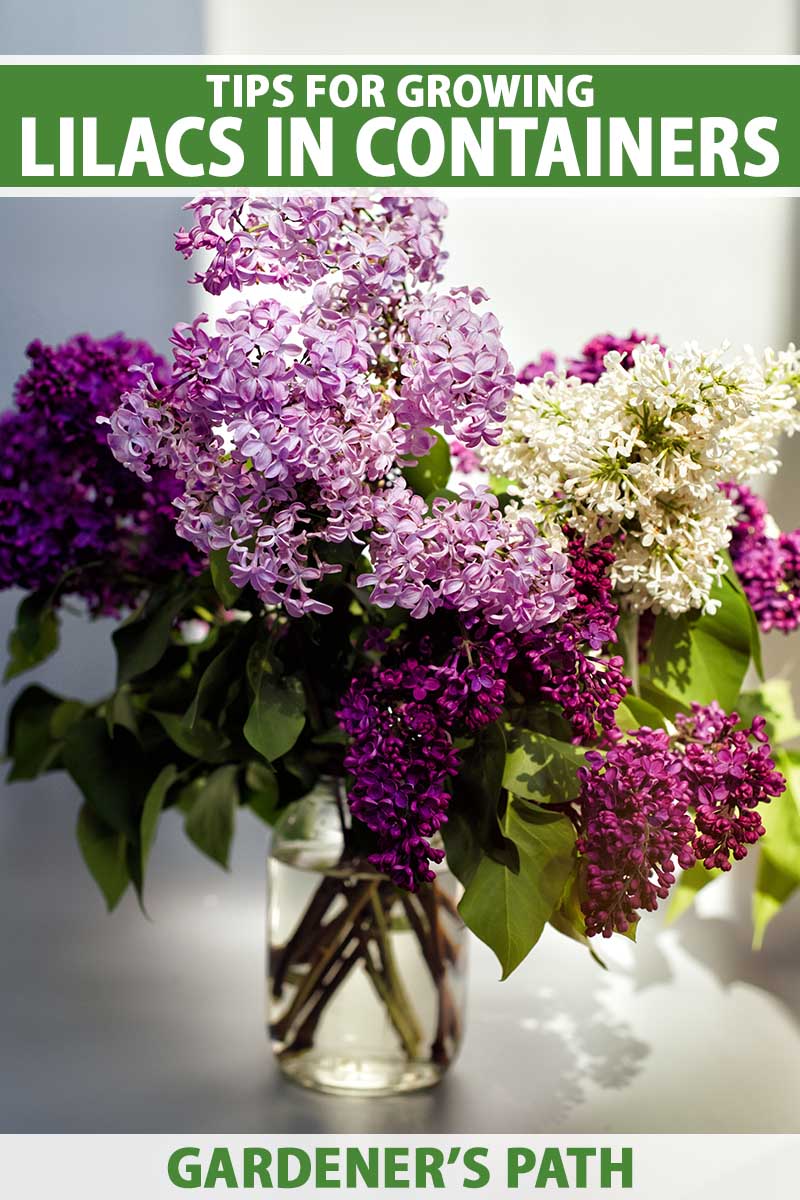
We link to vendors to help you find relevant products. If you buy from one of our links, we may earn a commission.
To ensure abundant blossoms and vibrant growth, potted lilacs need large containers and regular maintenance to keep their roots in check, and small-growing or dwarf varieties are recommended for their manageable sizes.
Given the conditions they need, you can still benefit from their beauty even in small spaces.
Here are all of the necessary elements that we’ll cover here, to successfully grow lilacs in pots and planters:
What You’ll Learn
Container Lilac Basics
Common lilacs, Syringa vulgaris, as well as other species and hybrids, have vast root networks.
While they aren’t considered invasive, growth is vigorous and typically spreads one and a half times the shrub’s mature width when grown in the ground.
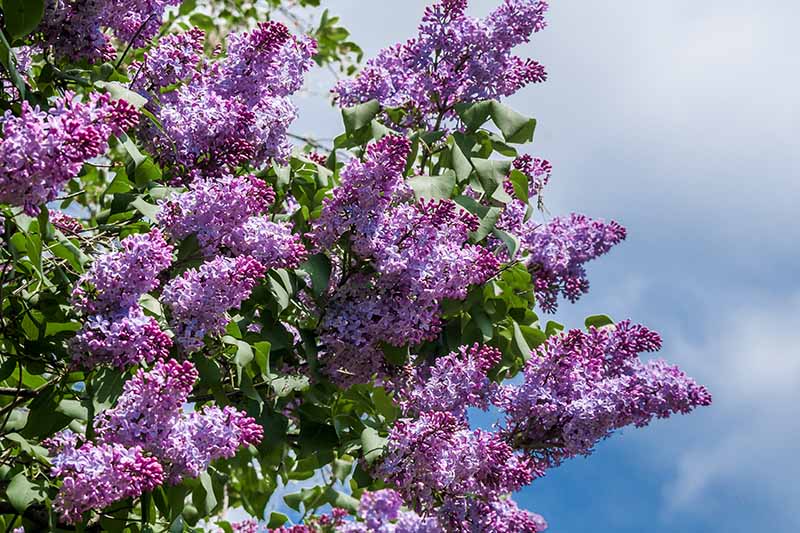
That’s all well and good in a large garden, but when the roots become crowded or rootbound, as happens when left unchecked in containers, flower production quickly dwindles.
So, the trick to keeping container specimens flowering vibrantly is to choose dwarf or smaller-sized varieties, and ensure they’re planted in large pots with ample room for roots to spread.
Depending on the container you choose and the size of your selected variety, this can mean regularly trimming the roots to fit the pot is required.
Much like a large bonsai specimen, keeping the roots shallow and compact ensures vigorous topside growth, and plenty of flowers.
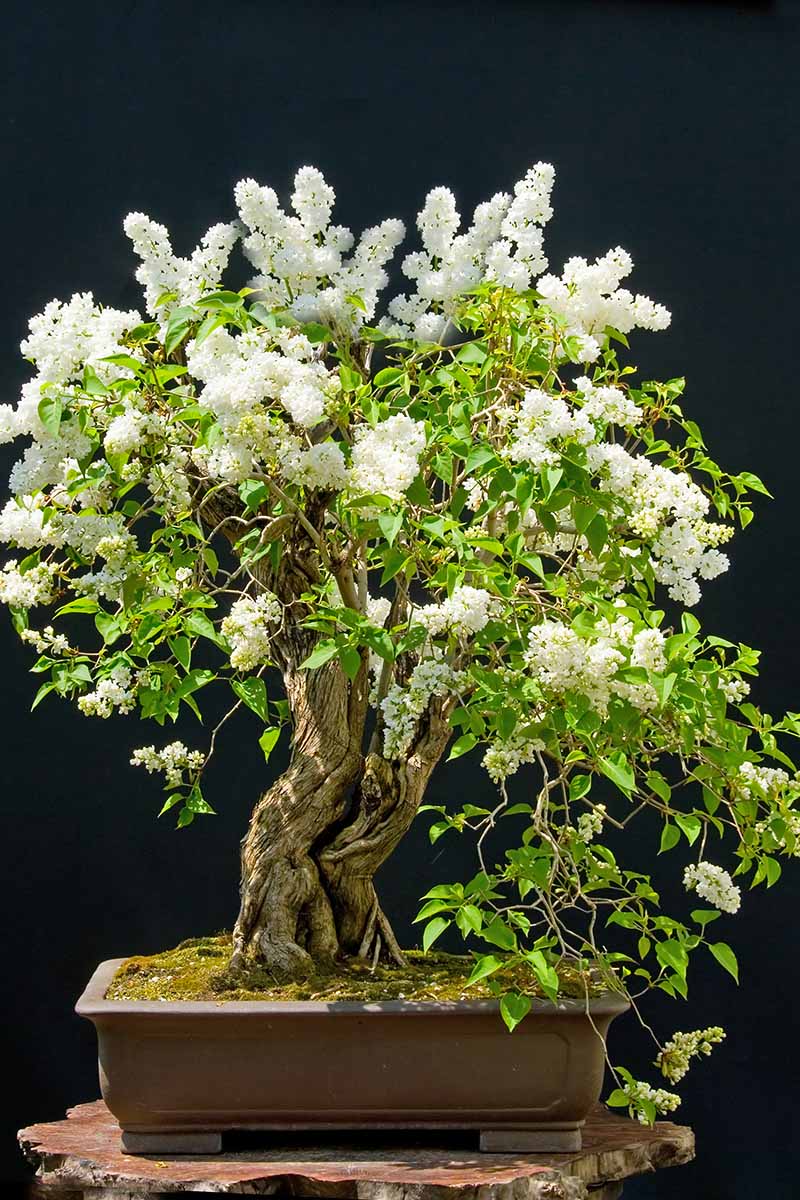
This is an extra step to add to the regular maintenance that’s required, but it’s easily done and worth every ounce of effort for those heavenly scented blossoms!
For more cultivation details, check out our guide to growing delicately blooming lilacs.
Pot and Planter Size Recommendations
Even though dwarf lilacs mature to a compact size, they still need plenty of room for root growth.
Provide as large of a container as possible, with a minimum size of 12 inches deep and 24 inches wide.
Larger containers provide better insulation to roots in both extreme cold and heat, and they don’t need to be watered as frequently either.
Ensure that the pot you choose has adequate drainage holes at the bottom.
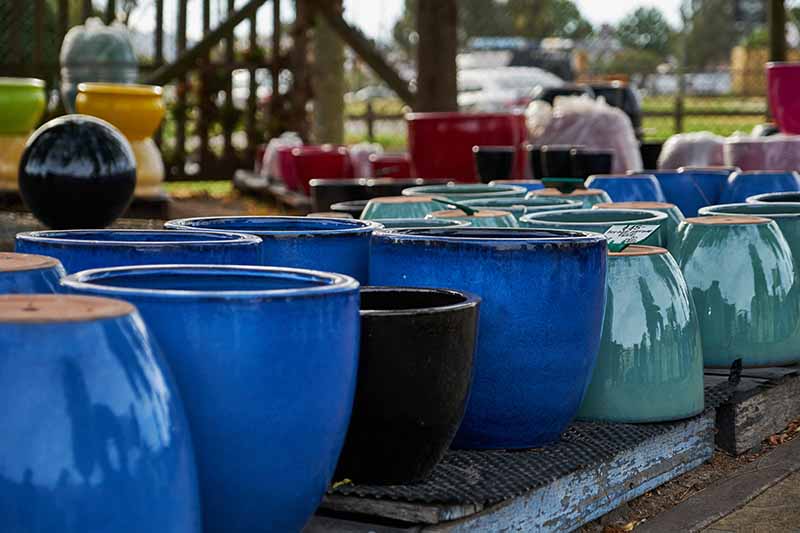
If you regularly experience freezing temperatures in your region, avoid porous, moisture-retaining materials like ceramic or terra cotta, which can expand and crack if they freeze.
Concrete, resin, and wood make suitable options, but avoid plastic, which offers little in the way of insulation.
Also, light colors are better than black, which can draw unwelcome heat to the root zone.
How to Grow
If your containers or planters are large and heavy, move them into their permanent spot before planting.
Lilacs require a full sun location where they will receive at least six hours of sun daily. They also need fertile, well-draining, humus-rich soil with a neutral to alkaline pH of 7.0 to 7.5.
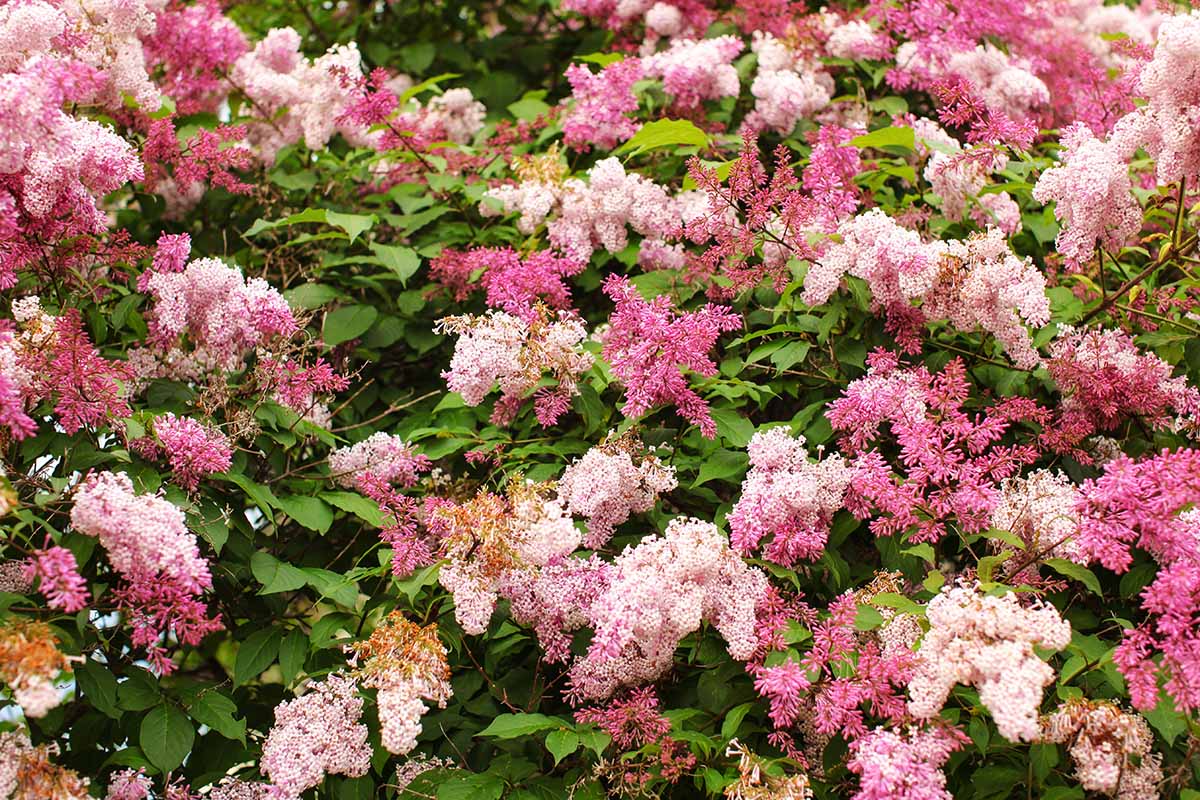
I prefer to line containers with a two- to three-inch layer of drainage material, such as broken pottery or pebbles.
Fill the container halfway with a fertile soil mix generously enriched with aged compost or well-rotted manure, as well as moisture-retaining material as described below in the section on soil needs. Avoid peat moss, which is too acidic for Syringa species to tolerate.
Mix in some bone meal, then set the roots in place. Backfill with soil, keeping the top of the root ball even with the soil level. Be sure to leave some space at the rim, to avoid runoff from the top when you water.
Water gently and deeply, at the soil level. The soil should be kept lightly moist but not wet, watering only when the top one to two inches are dry.
Feed potted plants annually in early spring, using a balanced 10-10-10 (NPK) fertilizer.
Soil Needs
For Syringa species, cultivars, and hybrids to thrive in containers, it’s important that they have fertile, sweet soil because they don’t do well in acidic conditions.
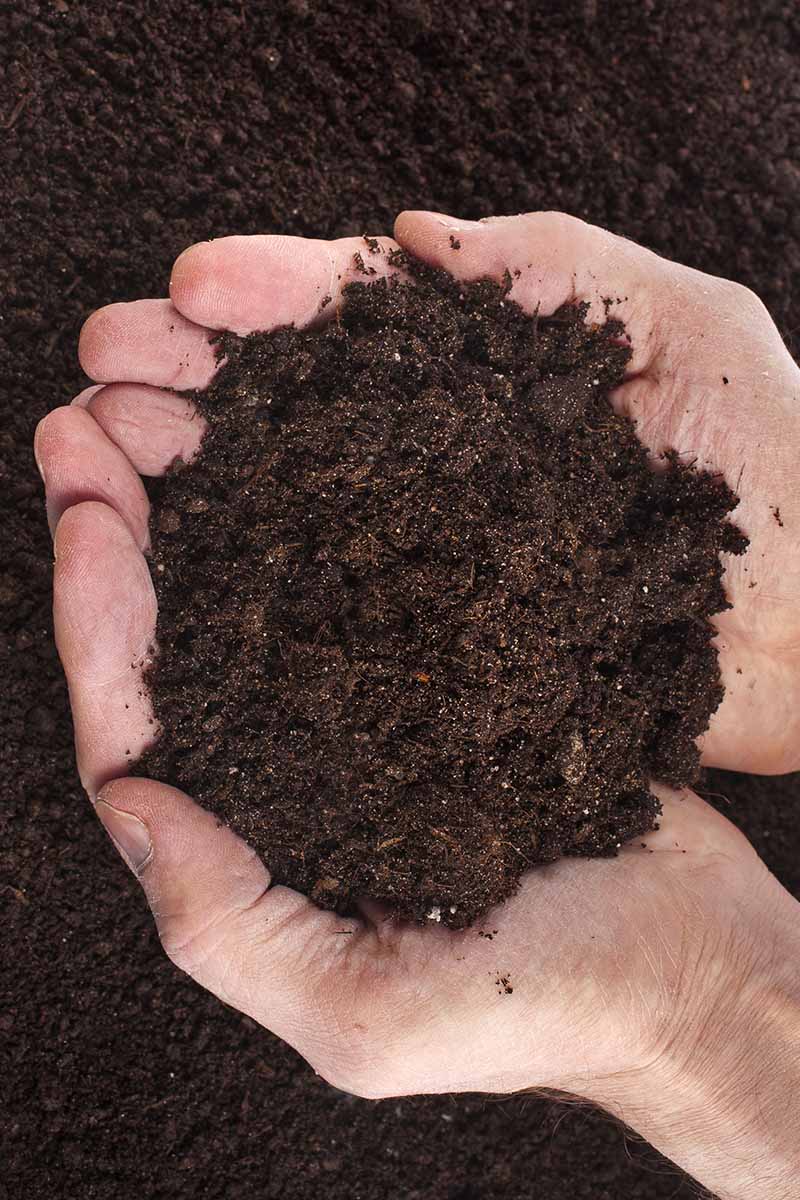
Amend up to half the soil volume with aged compost or manure. To this mix, add another 25 percent of moisture-retaining materials such as coconut coir, hemp fiber, perlite, or vermiculite, but avoid using peat moss, which is highly acidic with a pH of around 3.5.
Test the soil, and if it’s still too sour, sweeten the mix with dolomite lime, adding one cup per two cubic feet of soil.
To test the soil pH, you can use a probe meter.
This three-way meter tests moisture, light levels, and pH, and is available at Arbico Organics.
You can learn about more combination moisture meter options in our roundup of the best models.
How to Trim Roots
Roots can be trimmed in late winter in the first or second year after planting.
When pruning the roots, keep in mind that you want to create a compact, shallow structure for replanting that is about one-third smaller than the container.
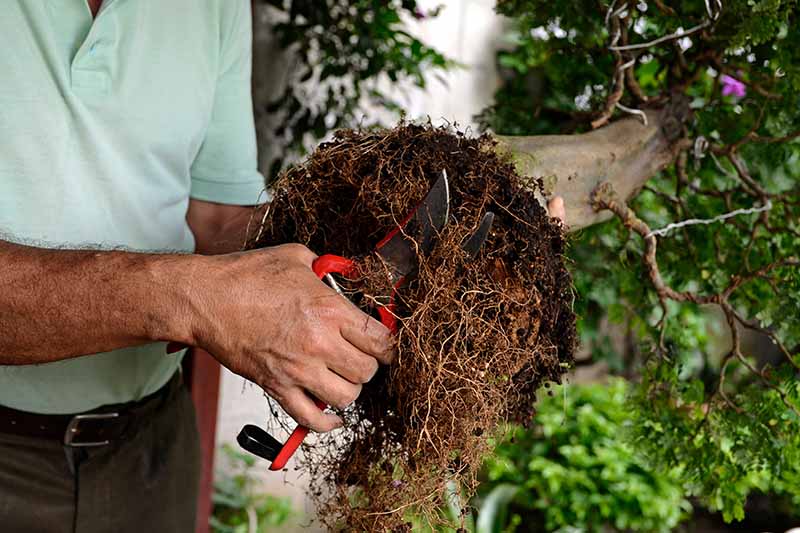
Allow the soil to dry slightly, then remove the lilac from its container and place it on a suitable work surface out of direct sun.
Use your fingers to gently loosen the soil from the roots, removing and discarding any matted, fibrous material.
With clean, sterile pruning shears, cut back by one-third any roots that are circling the main taproot and container walls.
Shorten any storage roots growing from the main taproot, removing about one-third of their length. Storage roots are the thick ones that grow downward.
Do not remove the thin hair roots growing from the main taproot.
Cut away about one-third of the entire lower part of the root structure with clean pruning shears, or a saw if needed.
Replace the plant in the container, settling the root ball level with the soil.
Repeat the root pruning process every one to three years as needed.
Growing Tips
To get the most out of your container-grown shrubs, keep the following tips in mind:
- Choose a dwarf variety that maintains a compact form of six feet or less in size for best results.
- Use neutral to alkaline soil for the best flower production.
- Keep the soil moist but not wet – lilacs can’t abide having roots that are sitting in water.
If possible, also be sure to locate your containers where the fragrance can be most enjoyed, such as under windows, beside walkways, or on the patio.
Pruning and Maintenance
Unlike full-sized specimens, in addition to keeping the roots in check, most dwarf varieties require little or no annual pruning aside from clipping spent flowers.
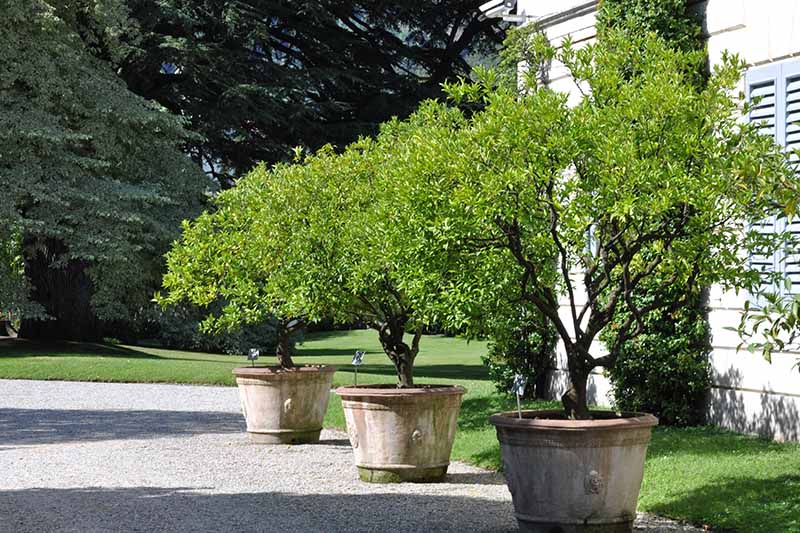
However, if cleanup or shaping is needed, it should be done immediately after flowering in late spring or early summer. Next year’s flowers form on this year’s new growth, and pruning at any other time can result in significant flower loss.
After flowering, deadhead spent flowers to prevent self-seeding. Remove any dead, crossing, or weak limbs, cutting them close to the ground.
Suckers can be cut off at ground level as well, but leave a few of the strongest in place.
The ideal lilac shrub is a combination of mature, flowering stems with a few new suckers that will eventually replace mature ones as they age.
Winter Care
Typically cold hardy in Zones 3 through 8, container lilacs benefit from cold-weather protection to prevent the roots from being exposed to cycles of freezing and thawing.
If possible, move them into a protected site to overwinter, such as under shrubs or trees, against foundations, or nestled into corners and nooks.
It’s important to note that potted lilacs should never be brought indoors in winter – they need exposure to about 2,000 hours of cold temperatures at 45°F or less for flower buds to set. But they can go into a cold frame or unheated garage or shed if needed.
Another option for container protection is to bury the plant in its pot in the soil, or to mulch heavily in mounds of evergreen boughs, leaves, or straw.
Add a thick, two- to four-inch layer of mulch on top of the soil to protect the crown.
For overwintering, it’s wise to stay away from containers made of porous materials like ceramic or terra cotta. As mentioned above, these materials readily absorb water which can expand when frozen, causing pots to crack.
Read more about winterizing lilacs in our guide. (coming soon!)
Cultivars to Select
For containers, planters, and pots, dwarf varieties offer the best size. Here are a few suggestions to get you started.
Baby Kim
The perfect container plant, Baby Kim® aka Syringa x ‘SMNSDTP,’ produces a full-sized show of fragrant flowers, but shrubs reach a mature size of only two to three feet tall with a similar spread.
The dark purple buds open to reveal mauve flowers that retain their vibrant color without fading.
Compact and tidy, Baby Kim® flowers from mid- to late spring and attracts butterflies and other pollinators, with good deer and disease resistance.
Fantastic on patios, beside walkways, and under windows, or anywhere their perfume and pretty flowers can be enjoyed. This hybrid cultivar is hardy in Zones 3 to 8.
Container plants from Proven Winners are available at Home Depot.
Bloomerang Dark Purple
Another beauty for pots and planters, Bloomerang® Dark Purple (S. x ‘SMSJBP7’) produces densely flowering shrubs of four to six feet tall and wide in an attractive, mounded shape.
The sweetly scented, dark purple blossoms flower profusely in spring, then rebloom from midsummer to fall for an exceptionally long season.
Highly attractive to bees, butterflies, and hummingbirds, Bloomerang® is deer resistant and has improved disease resistance. Plants in this series are also available in purple, or dwarf pink or purple varieties.
These plants are hardy in Zones 3 to 7.
Container plants are available for purchase from Burpee.
Little Lady
A dense, compact shrub with a tidy, easy-care shape, Little Lady™ (S. x ‘Jeflady’) is a pretty ornamental and an excellent space-saver that grows four to five feet tall with a similar spread.
In late spring, branches are loaded with magenta panicles that open to strongly perfumed, mauve-pink flowers.
Attractive to bees, butterflies, and hummingbirds, the flowers have a sweetly spicy fragrance, and scarlet fall foliage. Bred in Manitoba, Little Lady™ has excellent cold resistance and is hardy in Zones 2 to 7.
Container shrubs are available at Nature Hills Nursery.
Palibin
A dwarf Korean lilac cultivar packed with showy, reddish-purple buds that open to rosy pink flowers with a fantastic, spicy fragrance, S. meyeri ‘Palibin’ flowers in mid- to late spring.
The tidy shrubs grow four to six feet tall with a spread of five to eight feet.
Reblooming lightly in late summer, ‘Palibin’ is a magnet for pollinators, and it also boasts attractive fall foliage in shades of burgundy and scarlet. These plants are hardy in Zones 3 to 7.
Find potted shrubs at Nature Hills Nursery.
Tiny Dancer
Tiny Dancer™ (S. vulgaris ‘Elsdancer’) features compact, rounded shrubs that grow four to five feet tall and wide. These feature large, luxurious panicles of sweetly scented, dark purple buds that open to a soft lavender in mid- to late spring.
Attractive to bees, butterflies, and hummingbirds, Tiny Dancer™ is cold hardy and heat tolerant, with good mildew resistance. This cultivar is hardy in Zones 4 to 8.
Container plants can be purchased at Burpee.
And for more recommendations, both large and small, check out our guide to 23 of the best lilac varieties to grow at home.
Potted Magic
When you don’t have the space to grow full-size specimens, growing lilacs in containers can provide a compact version with plenty of lovely, scented flowers to enjoy.
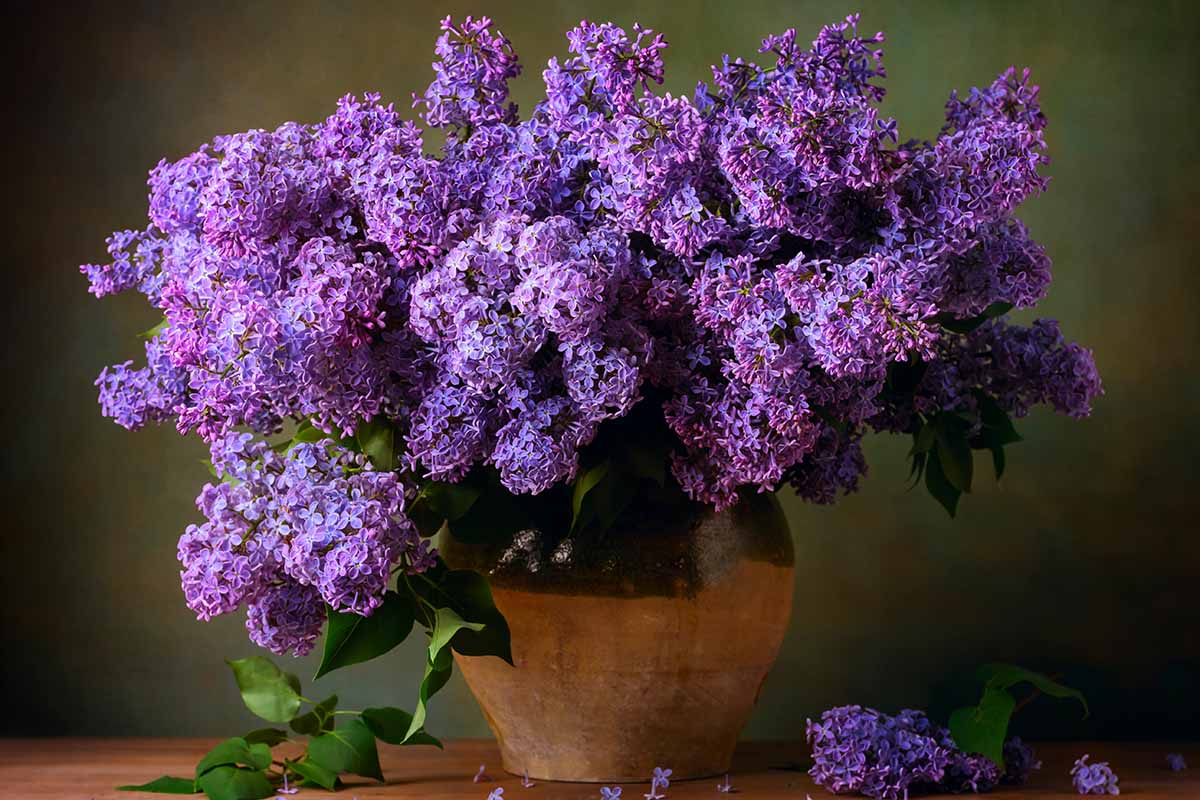
Remember to choose dwarf or small-growing varieties, provide neutral or alkaline soil, and keep the roots in check for an abundance of potted lilac magic!
Do you folks have any favorite varieties for planters? Let us know in the comments section below!
And for more info on lilac bushes, dig into these articles next:

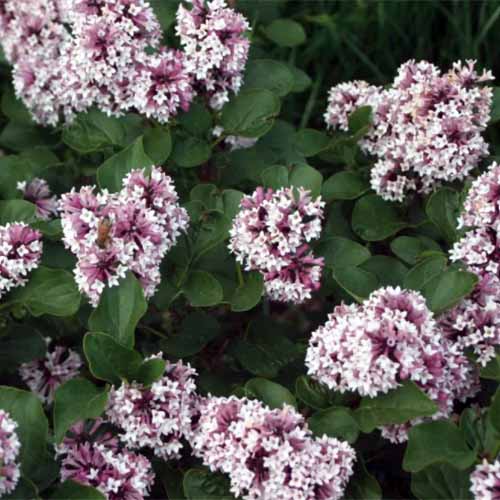
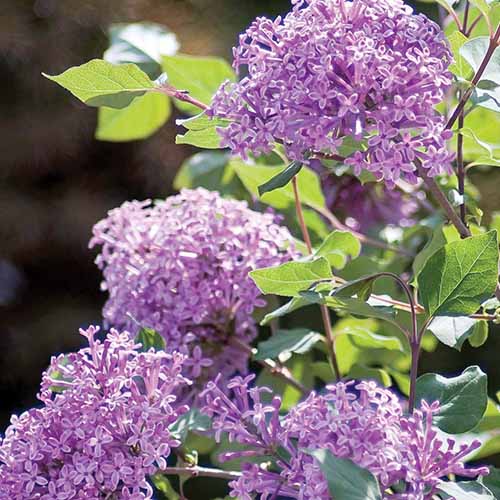
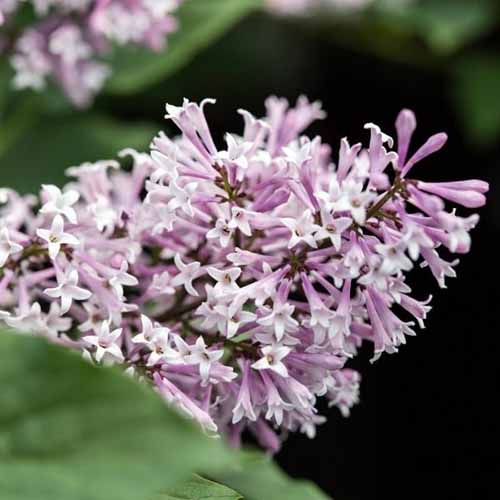
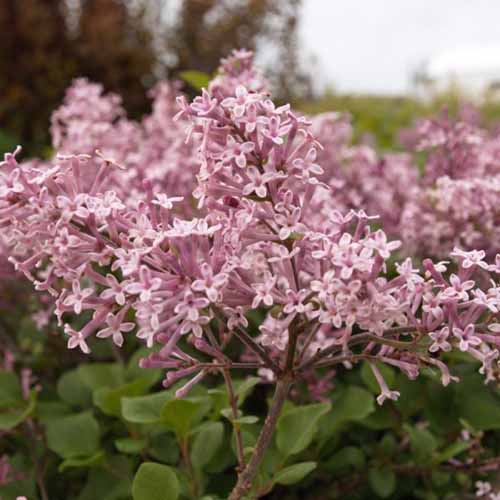
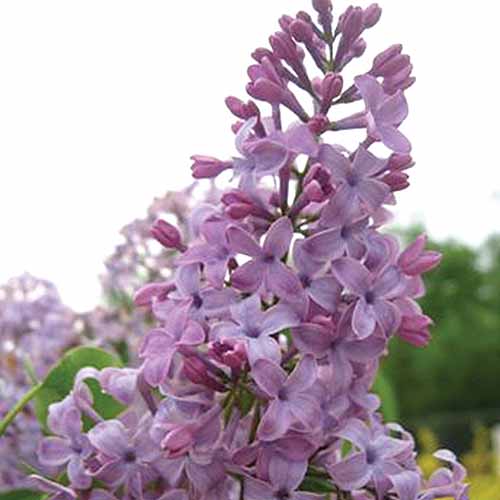
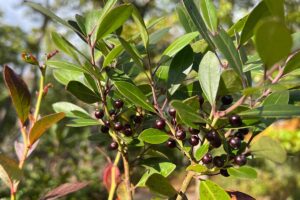
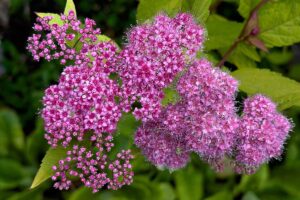
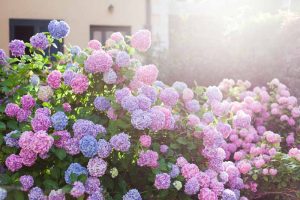
What is the name of the bonsai tree shown on this page with the white flowers?
Hi Andrea, the bonsai plant is a lilac.
Hi! Thank you for such a detailed information!
can I please clarify if I need to pot a lilac in small planter into a big container or just plant in in a big one? When roots trimming needed, I should dig the plant from the soil and then put it back, am I correct? I’m nubby, sorry
Hi Kristina, with the fast-spreading roots, Syringa can go directly into a larger container – no need to gradually increase the pot size.
And yes, to trim the roots, remove plants from their containers and trim away about one-third of the roots from the rootball bottom and sides. Scrap away a couple of inches of soil from the top then replant in the same container with fresh soil.
Thanks for asking!
Thank you for clarifying!
You’re welcome!
This is great info! My potted lilac is about five years old and I’m wondering when would be the best time to repot it into a larger pot?
Hey Joe, your potted Syringa is probably ready for a larger pot now… depending on the cultivar and pot size, expect to repot every three to five years or so.
Thanks for asking!
Hi Lorna I purchased a Korean lilac & info says pot should be approx 40cm deep. Is that top of planter to bottom or is it front to back of planter? & also 80cm wide is that the length or front to back measurements? I’m going to keep tree small. Thanks
Hi Carole, 40cm deep is the measurement from top to bottom (drainage hole to rim).
The 80cm wide is the measurement of the diameter of a round pot, or the distance between two opposing walls in a rectangular or square pot.
Sounds great for a Korean variety…thanks for asking!
Hi Kim
can you please recommend a good quality compost which will be best for my lilac?
Thanks
Hi Sarah, most composts are suitable, but avoid those with peat moss added to the mix – the peat typically acidifies soil and lilacs like things a little sweeter, with a neutral to slightly alkaline pH of 7.0 to 7.5.
I suggest something like Compost Plus or Tank’s Organic Plus… both are available at Arbico Organics.
Thanks for asking!